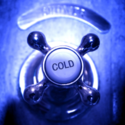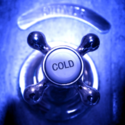Quantum coherence in cold baths
Nitrogen vacancy centers occur in diamond when a nitrogen atom substitutes for a carbon atom, adjacent to a carbon vacancy. These naturally occurring defects are useful systems in which to study quantum information storage because they possess a localized spin that has a relatively long spin coherence time.
The coherence time of the spin on a nitrogen vacancy center is ultimately limited by fluctuations in its environment (in this case, the fluctuating electron spins on surrounding nitrogen defects). In the current issue of Physical Review Letters, Susumu Takahashi, Ronald Hanson, Johan van Tol, Mark Sherwin, and David Awschalom report they can extend the lifetime of the spin on a nitrogen vacancy center by polarizing the surrounding “spin bath” of nitrogen spins. With electron paramagnetic resonance they estimate that the nitrogen spins are 99.4% polarized in a field of 8 T at 2 K. This very high degree of polarization of the bath lengthens the spin coherence time of the nitrogen vacancy centers by almost two orders of magnitude. - Daniel Ucko





